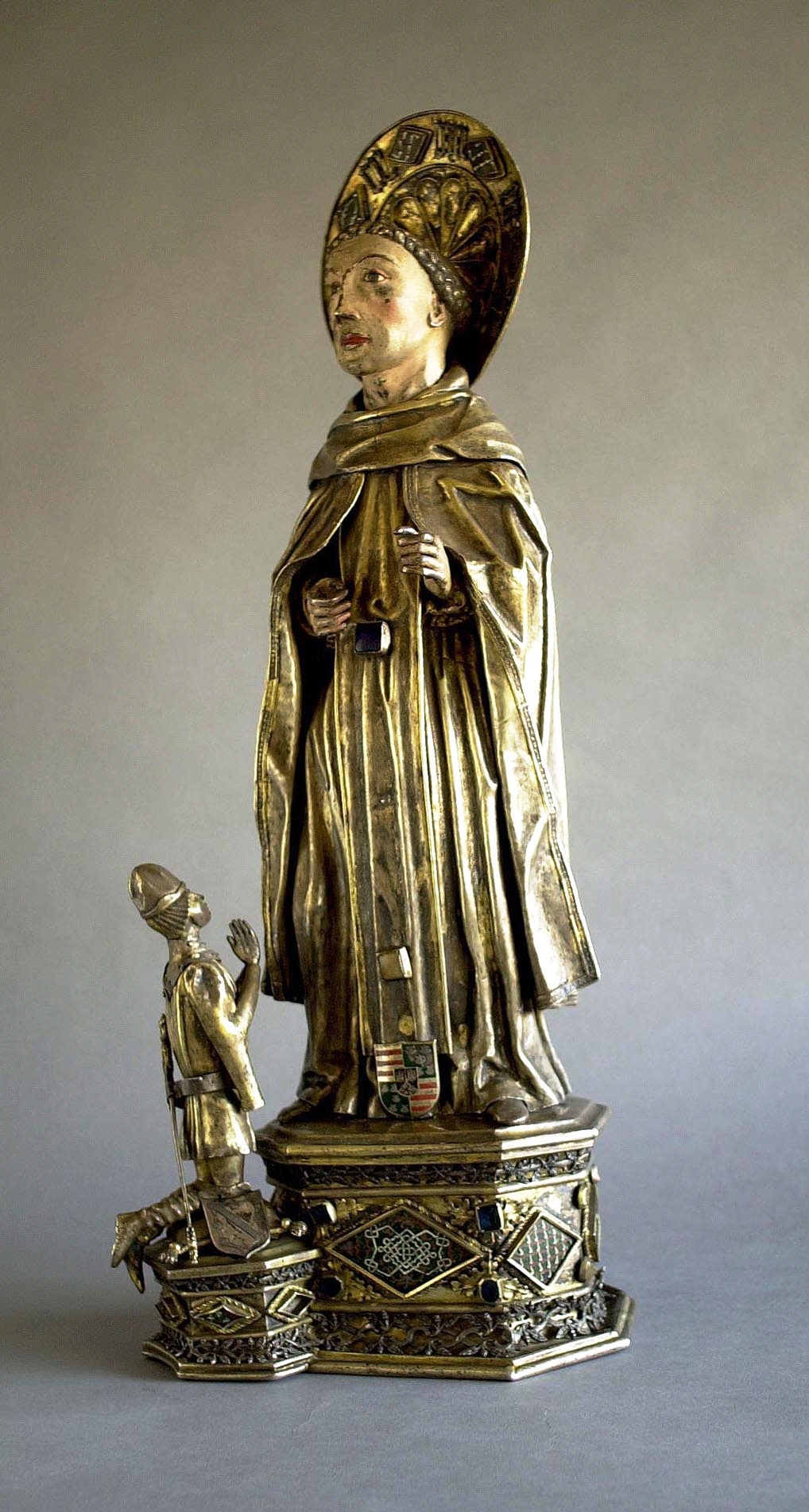LUCÍA GÓMEZ-CHACÓN, Diana, “Linaje y devoción en la Plasencia del siglo XV: san Vicente Ferrer y don Juan de Zúñiga y Pimentel”, Ars Longa, nº 25 (2016), pp. 99-113.
Resumen
La imagen votiva de plata sobredorada de san Vicente Ferrer conservada en el Museo Nacional de Artes Decorativas constituye una de las primeras representaciones del santo dominicano en Castilla, lo que permite documentar la temprana difusión del culto al religioso valenciano por tierras castellanas. A sus pies aparece arrodillado don Juan de Zúñiga y Pimentel, a petición de su madre doña Leonor Pimentel, quien habría encargado la obra con la intención de donarla al convento de San Vicente Ferrer, que ella misma y su marido, don Álvaro de Zúñiga, habían fundado en 1464 en Plasencia.
En el presente artículo se pretende poner de manifiesto la excepcionalidad iconográfica y técnica de esta pieza, así como analizar la devoción que los duques de Plasencia y, más concretamente, la ya mencionada Leonor Pimentel, habrían profesado por la Orden de Predicadores, en general, y por el santo valenciano, en particular.
Abstract
The gilt silver image of St. Vicente Ferrer preserved in the Museo Nacional de Artes Decorativas constitutes one of the first representations of this Dominican saint in Castile, which documents the early diffusion of the cult to the Valencian saint through Castilian lands. At his feet, Juan de Zúñiga appears kneeling down, by desire of his mother, Leonor Pimentel, who would have commissioned the effigy with the intention of donating it to the convent of Saint Vicente Ferrer, that herself and her husband, Álvaro de Zúñiga, had founded in 1464 in Plasencia.
This paper aims to highlight the exceptional iconographic and technical nature of this piece, as well as to analyse the devotion that de Dukes of Plasencia and, more specifically, the abovementioned Leonor Pimentel, would have to the Order of Preachers, in general, and to the Valencian, saint, in particular.

